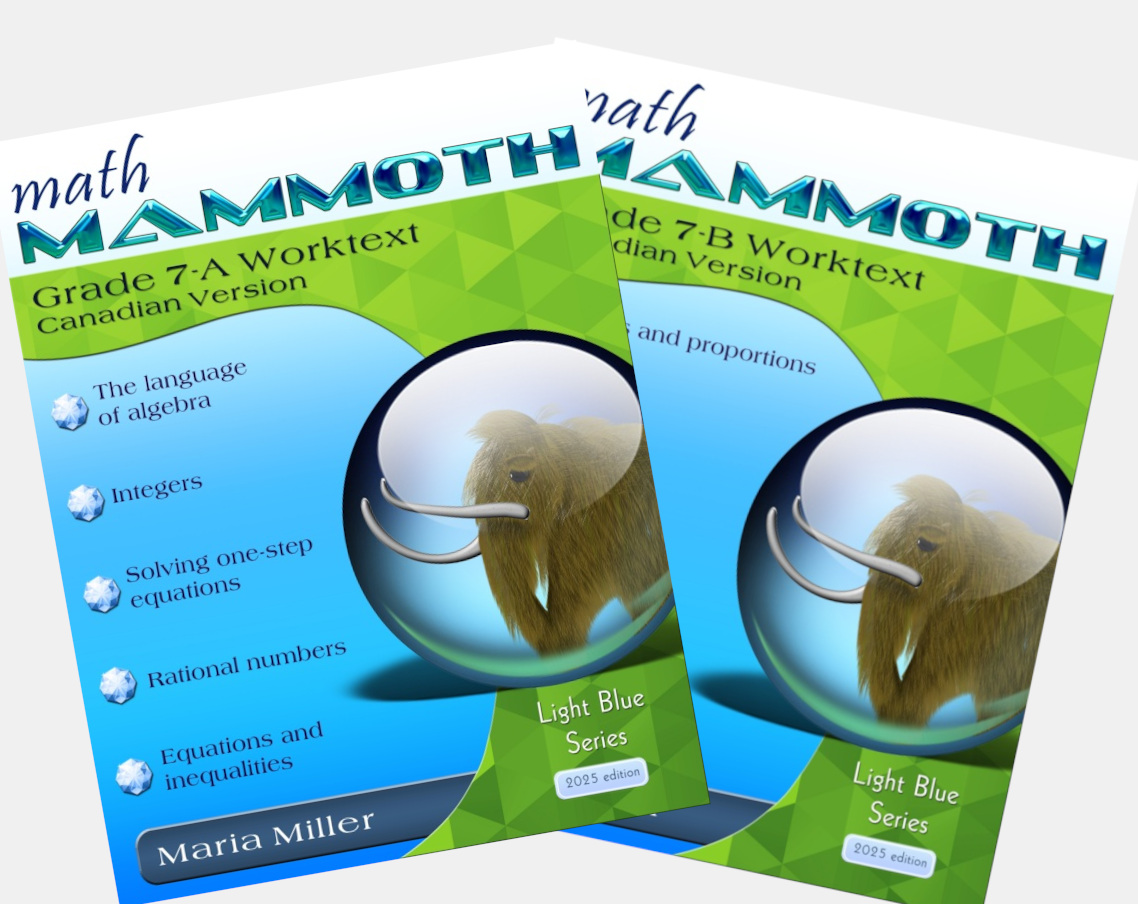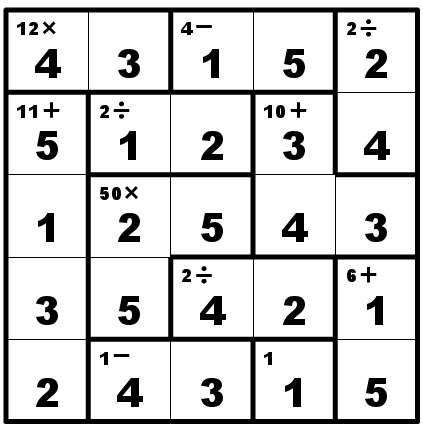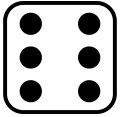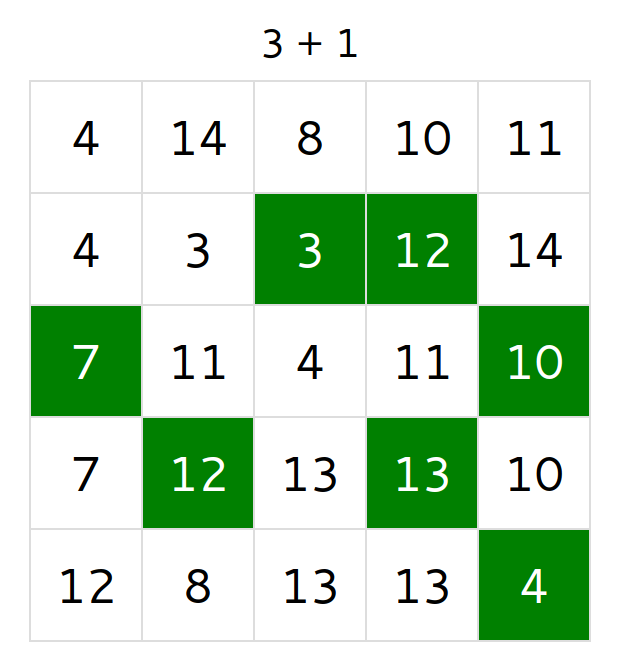
Hello again! In this month's newsletter we have: |
1. Math Mammoth newsRainbow Resource Center is running a sale for Math Mammoth printed books September 2 through September 8. The grade-level items are 25% off of retail prices. The sets of four books are slightly more... between 25% and 30% off.We have published the Canadian version for grade 7! If you have purchased the grades 5-8 bundle, Canadian version, in the past, you can now get this new grade 7 within that bundle by using our download link generator. And if you have purchased the digital download of grade 7 in the past, as a U.S. version, you can get the Canadian version by contacting us. Math Mammoth has again won awards from Practical Homeschooling Magazine! Thanks to you all who voted!
|
2. A question on rounding and estimatingLooking back... one time I got this question from a Math Mammoth user and I'm sure it's still relevant to some.In 6A, Rounding and Estimating, the dollar amounts in problem 5 and 6 led me to a question. In question 5 the dollar amount is rounded to the nearest TENTH, but in question 6 it is rounded to the nearest ONE for the apples and TENTH for the cheese. This is our first book we have used and I was wondering if there was a rule we should be following for this procedure? Thank you so much! These books are awesome. The math problem in question is this: Elisa bought 7 lb of apples for $1.19 per pound and 3 blocks of cheese for $11.45 a piece. Estimate the total cost. Here's my answer: Estimation is not an exact science but depends on your mental math abilities. You round based on what YOU can calculate in your head. And if you can calculate in your head without rounding at all, you're welcome to do even that, but I know most people can't, or wouldn't want to take the time. So, whether you round to the nearest dollar or nearest ten cents is up to you. Check what kind of number you get — is it easy to calculate with? In this case, rounding $11.45 to $11.50 is preferred, because it is still fairly easy to calculate with 1/2 dollar, and it allows less error of estimation than rounding to the nearest dollar (which would make it $11). The amount $1.19 could have been rounded to $1.20; nothing wrong with that. But then you have 7 x your amount... can you do 7 x $1.20 in your head? If yes, great! (You should be able to!) If not, round to $1.00. |
3. Brainie game and Kenken puzzlesCheck how your 2nd-6th grader might like this game titled Brainie from MathPlayground.com for a bit of mental math at the start (or end) of the day.It starts out with simple addition but advances in levels. Soon, you will see tiles with "-1", "-2", etc. which indicate subtraction. And after a few more levels you'll see *2 and similar, indicating multiplication. I liked it! Here lately someone gifted me with a little Sudoku book so I've been doing them and enjoying it. Sudoku is just about placing the counting numbers into the grid but did you know there exist similar puzzles with arithmetic rules? They're called KenKen puzzles. They let you practice a bit of mental math plus logical thinking! You can play Kenken online here — options include the puzzle size, operations to use, and difficulty level. The image above shows a 5x5 solved Kenken puzzle that uses all four operations. |
4. Dyscalculia againI asked for feedback in my last newsletter. I didn't get very much. A few users noted that Math Mammoth had helped a dyscalculic child. One person passed on links to resources.I started researching it myself and am still doing so. I will note here a few major features of that condition.

A far as what to do if your child has dyscalculia, the general recommendations revolve around using lots of visual models and manipulatives. It seems that with children, there is some hope in alleviating the condition but with adults, it is much more difficult because their brains have already fully developed. And this is a brain-based condition; the brain actually works differently than in most people. I was sent these two websites for resources:
My main goal in researching this topic is to find out what to say to people that ask whether Math Mammoth is suitable for students with dyscalculia. So far, I'm kind of thinking that while MM is not a complete solution, it's not the worst possible curriculum either. Again, if you have ideas/feedback after having read this portion, I'm still all ears. :) |
5. BINGO! math gamePractice basic operations (addition, subtraction, multiplication, or division) with our fun online bingo game! You can choose from single or double-digit addition, single or double-digit subtraction, multiplication tables, or basic division facts. The game has both a single-player and multi-player mode. Check it out! |
6. Just for fun!Thanks for reading! 🙂 Feel free to forward this issue to a friend/colleague! Subscribe here. Till next time, Maria Miller |
| Math games and interactive practice | Math Mammoth freebies | New to MM? Start here |
| Privacy & your personal data | Lessons from Moses' Life: Three Sets of 40 | Blue Series: For filling in gaps |






